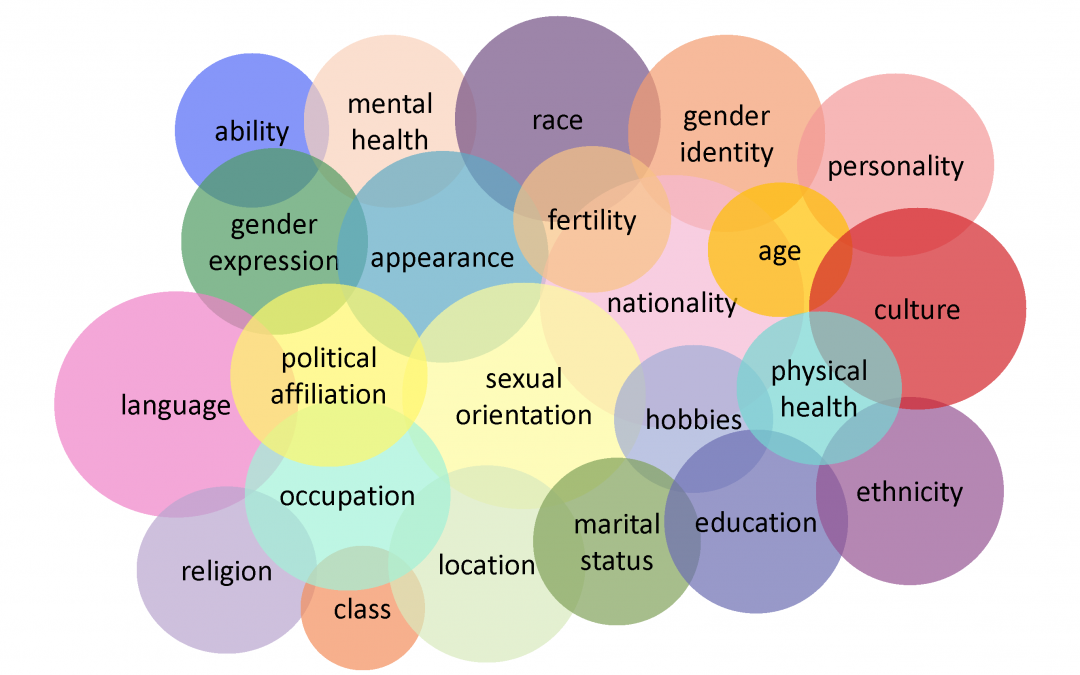Often seen as a problem for boards, a Human Resources issue, or a concern for hiring managers to address during the recruitment process, Diversity and Inclusion should really be discussed alongside organisational culture. How diversity is reflected in an organisation and how it responds to inclusion is in its genes, and that its everyone’s responsibility. For however well intentioned, any D&I objectives cannot be achieved unless they are driven by the business as a whole – from senior leaders and executives, through to middle managers and at grass roots. This is the only way to land an organisation that fosters a workplace culture where diversity and inclusion are valued, cultural safety is promoted and the ways in which intersectionality affects our workforce is recognised.
Diversity Council Australia (DCA) describes diversity as being the mix of people in your organisation, and inclusion as being about creating a workplace environment or culture that enables that mix to work – both for organisations and employees. D&I is more than just policies or programs and it’s not limited to gender equality. Diversity can be multicultural diversity, religious or faith based, diversity of experience, socioeconomic diversity, gender identity, sexuality, age, identifying as Aboriginal or Torres Strait Islander, disabilities (including disabilities that are not visible) and a wide range of other demographics. Whilst it’s not a given, surely there are advantages in bringing together people with different views, lived experience or myriad perspectives?
Abundant research tells us allowing people to learn from one another leads to increased problem-solving, fosters innovation and results in better decision-making. In Diversity Still Matters (May 2020), McKinsey lists five key imperatives for championing D&I initiatives:
- Winning the war for talent and holding on to top talent
- Improving the quality of decision making and enhancing problem solving skills
- Increasing customer insight and innovation – diverse teams are more innovative and stronger at anticipating shifts in consumer needs and patterns
- Driving employee motivation and satisfaction – companies committed to D&I are about 75% more likely to report a pro-teamwork leadership culture
- Improving a company’s global image and license to operate – companies that maintain (or increase) their focus on D&I during the downturn are likely to avoid the risk of being penalised in its aftermath
Working in diverse teams opens the exchange of ideas and inspires creativity. A diverse and inclusive workplace is vital for attracting and retaining top talent, where employees feel they have a voice. Candidates are drawn to organisations where employers harness a culture of inclusion and have embedded inclusive values, treating employees equally regardless of their unique differences. Again, research tells us diverse companies are more profitable and more likely to achieve long-term growth[1]. Promoting D&I also positively enhances the culture of an organisation. Now more than ever, it is essential to engage with your employees, earn their deeper trust and entreat the commitment you will need to adapt to the rapid change and continuous disruption in the ‘new reality’.
While it would be nice to think we are doing a reasonable job within our typically diverse and often inclusive workplaces, some statistics tell another story. Gender equality, for example, has been a focus for years (Australian private companies with 100 or more employees are even required to submit gender reporting to WGEA[2]), yet the stats show there is a lot of work still ahead for us. For example, from a global perspective, there are currently only 37 CEOs who identify as female in Fortune 500 companies? That’s just 7.4%. In anyone’s view, that should be totally unacceptable.
| Europe | 5% | Germany | 2% |
| France | 2% | Scandinavia | 2-3% |
| Canada | Less than 4% | Australia | 5% |
McKinsey states, “Inclusion and diversity are at risk in the covid crisis – but are critical for business recovery, resilience and reimagination.” They go on to say, “When leaders and organisations reaffirm their commitment to D&I, it’s an opportunity to seize the moment, to make a significant difference to the organisation’s performance”.
There is no easy way to create a diverse and inclusive work culture, but you can certainly start with your executive search and recruitment process. In a Talent short market, recognising unconscious bias that may affect hiring decisions (more about that another time), integrating diversity targets into your hiring process, sourcing candidates from a diverse pool (outside your industry or sector) and considering partnering with an independent advisor, such as an executive search consultant are some ways of integrating D&I into your processes.
Here are some below are some further questions for you to consider:
- How do we become more inclusive and advocate for others?
- What initiatives have you seen work?
- Do you have a D&I culture?
- Who is championing D&I in your organisation?
- How do you target and source your talent?
- Are you aware of your unconscious bias?
- Does D&I genes determine an organisations culture?
I would love to extend this discussion to all senior leaders and executives, particularly senior leaders within the Human Resources community. Please share your thoughts in the comments on this blog, via social through the links below or connect with me on LinkedIn.
Also, I am always open for a confidential discussion on +61 411 302 582.
Further reading on TRANSEARCH Insights:
Cultivating Diversity and Inclusivity in the Workplace
The Gender Gap in C-Suite Roles is Still too Wide
[1] Harvard Business Review 2021
[2] Workplace Gender Equality Act 2012

Silvana Pardo is a Director of TRANSEARCH International Australia, one of Australia’s most progressive executive search firms and one of the leading executive search organisations in the world. With over 25 years of experience and an extensive business network of Human Resource professionals, Silvana enjoys an outstanding reputation as one of Australia’s leading Search Practitioners. Read more…


